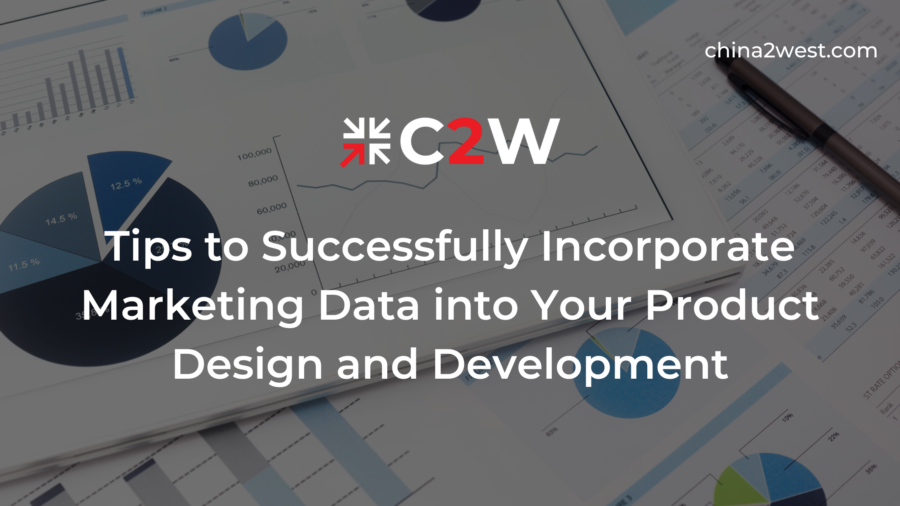In the dynamic realm of modern business, the integration of marketing data into product design and development is not merely a strategy; it’s a strategic imperative.
In this article, we aim to delve deeper into essential strategies and tips, ensuring a seamless fusion of marketing insights into the entire product creation process—an element crucial for maintaining a competitive edge in today’s fast-paced markets.
Understanding the Importance of Marketing Data
Leveraging Customer Insights
To create products that genuinely resonate with your target audience, delving into the wealth of customer insights is imperative. Engage in comprehensive market research, meticulously analyze customer feedback, and identify emerging trends.
Beyond understanding customer preferences, this approach lays the groundwork for innovative product development that anticipates and addresses evolving consumer needs.
Aligning with Market Trends
Staying abreast of market trends is not only advisable but paramount. Regularly peruse industry publications, actively participate in conferences, and closely monitor competitors.
Aligning your product design with current trends ensures that your offerings are not only in sync with the market but also possess a distinct advantage over competitors. Moreover, it positions your brand as a trendsetter, enhancing its appeal in the eyes of consumers.
Implementing Marketing Data in Product Design
Collaborative Approach
Forge a robust collaboration between your marketing and product design teams. Fostering open channels of communication ensures that marketing data has a direct and immediate impact on design decisions.
This synergy enhances the overall product development process, resulting in offerings that not only meet market demands but also address specific consumer pain points.
Regular brainstorming sessions and cross-functional workshops can facilitate this collaboration, allowing for a holistic understanding of both marketing insights and design considerations.
Iterative Prototyping
Embrace an iterative prototyping approach to enable continuous refinement based on marketing data.
By creating prototypes and gathering feedback early in the development cycle, you can make informed adjustments, significantly reducing the risk of launching a product that doesn’t resonate with your target audience. Encourage user testing, solicit feedback from focus groups, and leverage this information to refine the product iteratively.
This not only enhances the final product but also accelerates the time-to-market by addressing potential issues early in the development process.
Optimizing Product Development with Marketing Data
Agile Methodology
Implement agile methodologies in your product development process. The agile approach allows for flexibility and responsiveness to changing market dynamics.
Regular feedback loops and incremental improvements, informed by marketing data, ensure that your product remains aligned with customer expectations throughout the development lifecycle. Embrace cross-functional teams, short development sprints, and constant collaboration to maximize the benefits of the agile approach.
This adaptability is key to navigating the uncertainties of the market and staying ahead of the competition.
Data-Driven Decision Making
Make data-driven decisions a foundational element of your product development strategy. Leverage analytics tools to extract meaningful insights from marketing data.
By harnessing the power of data, you can refine product features, pricing strategies, and marketing campaigns, ensuring a holistic and effective approach. Implement A/B testing for various product features and marketing messages, allowing you to identify what resonates best with your audience.
Data-driven decision-making not only minimizes risks but also maximizes the impact of your product in the market.
Measuring Success and Refining Strategies
Key Performance Indicators (KPIs)
Establish relevant Key Performance Indicators (KPIs) to measure the success of your product in the market.
Whether it’s sales numbers, customer satisfaction scores, or conversion rates, tracking these metrics provides valuable feedback. Regularly revisit and adjust your strategies based on KPI insights to continuously improve your products.
Use KPIs as benchmarks for success and implement a robust performance measurement framework. This iterative approach ensures that your product strategies are not static but evolve to meet changing market dynamics.
Feedback Loops
Create robust feedback loops that encompass both marketing and product development teams. Encourage ongoing communication to address challenges promptly and capitalize on emerging opportunities.
This iterative process ensures that your products evolve in tandem with market dynamics, fostering adaptability and sustained success. Implement regular reviews and retrospectives to gather insights from both teams, fostering a culture of continuous improvement.
By embracing feedback loops, you create a responsive and dynamic environment where your products can thrive in the ever-changing market landscape.
Incorporating marketing data into your product design and development processes is not just a trend; it’s a necessity in the modern business landscape. Remember, in the dynamic world of business, the ability to adapt and innovate based on marketing insights is the key to staying ahead and making a lasting impact in the market.
If you are new to this realm, consider working with a manufacturing company, one like C2W with their own in-house international team of engineers and designers as well as nearly 20 years of experience in helping numerous companies launch their products. Contact us now!


